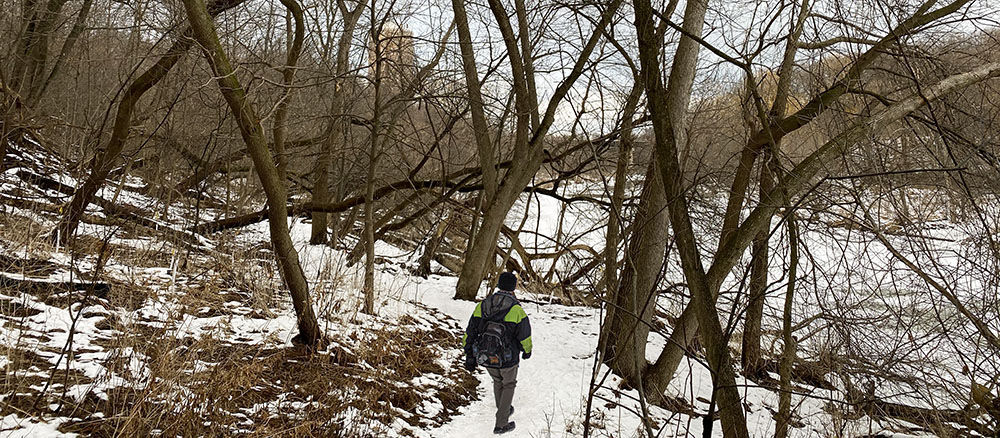
Nature and Community: A Winter Walk in the Milwaukee River Greenway
January 25, 2021 | Topics: Places, Spotlight, Stories
Story and photos by Eddee Daniel
When was the last time you walked a secluded woodland trail? When the only sounds were the mellow refrains of your companions’ voices? Do you remember a feeling of serenity, of wonder at the beauty of nature? Chances are, memories like these take you somewhere far from the city. But they don’t have to…, not in Milwaukee at least. We are blessed, of course, with many lovely urban parks, but none quite like the Milwaukee River Greenway. I recently joined a group organized on Meetup.com who wanted to explore the Greenway….

Midwinter is not everyone’s idea of a good time to explore the outdoors. The cold is one thing—though easily conquered with appropriate clothing. There is also the drudgery of deep snow, treachery of ice, nastiness of slush, or misery of mud, depending on the particulars of our increasingly mercurial weather. Nevertheless, urban adventurers abound, especially during this past year as the pandemic has motivated more and more people to leave the comfort—and claustrophobia—of home.
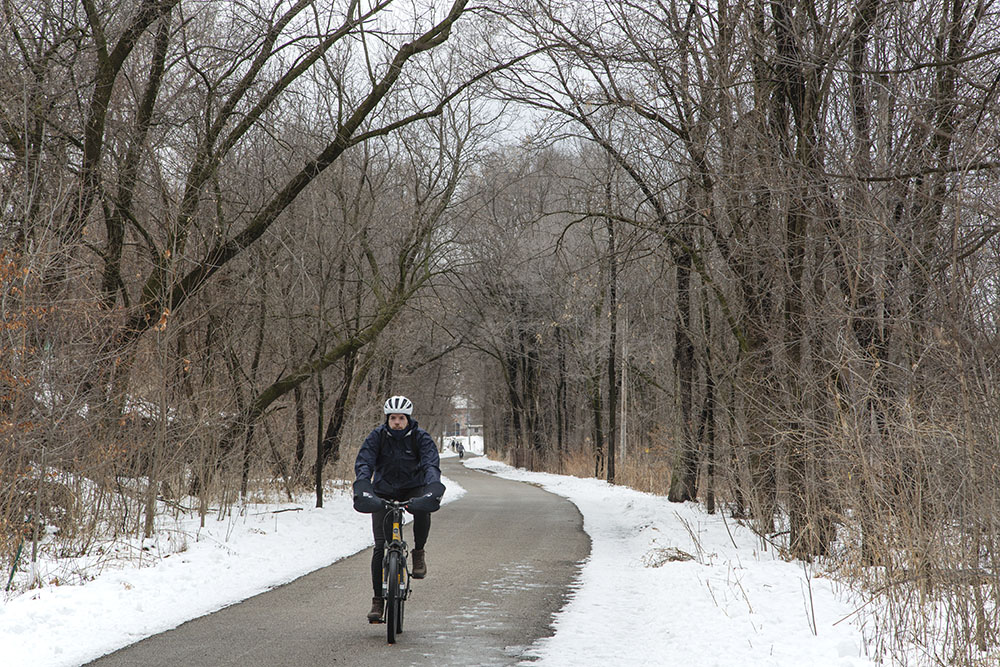
We know, instinctively if not always consciously, that the two most basic things with the power to console, to heal the spirit, and nurture our frail lives are nature and community. What better way can there be, then, to relieve the stresses of our current turmoil than to come together in a—socially appropriate—shared experience of the natural world?
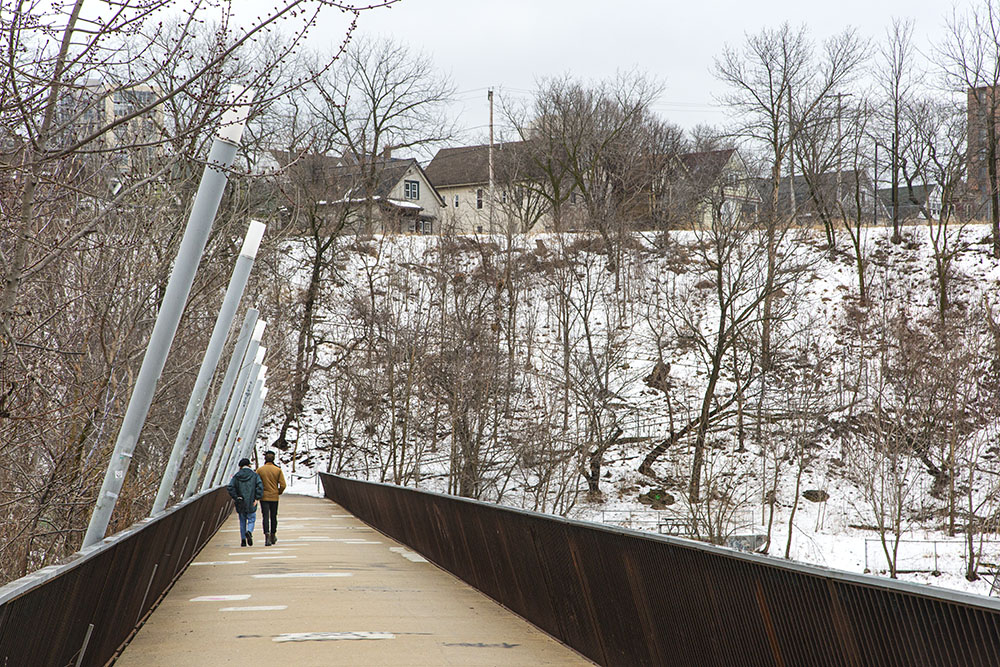
Our trek begins at Kiwanis Landing in Turtle Park, at the far southern tip of the Greenway, not far from the pedestrian bridge that marks the former North Avenue Dam site. The dam, demolished in 1997 after many years of being left open, is arguably responsible for the fact that so much of the riverway was left in a natural state for so long.

There are fifteen of us, bundled to varying degrees, most outfitted with traction cleats for the icy trails we are likely to encounter in the frigid conditions. Mostly strangers, we take a moment to say our names, though I would have liked to know a little more. For it turned out, from chatting along the trail, that our number included someone from as near as the condo overlooking Turtle Park and as far as Washington County. We join together for a common experience, no matter our professions or political persuasions. The river knows no such distinctions and we all share an appreciation for nature.
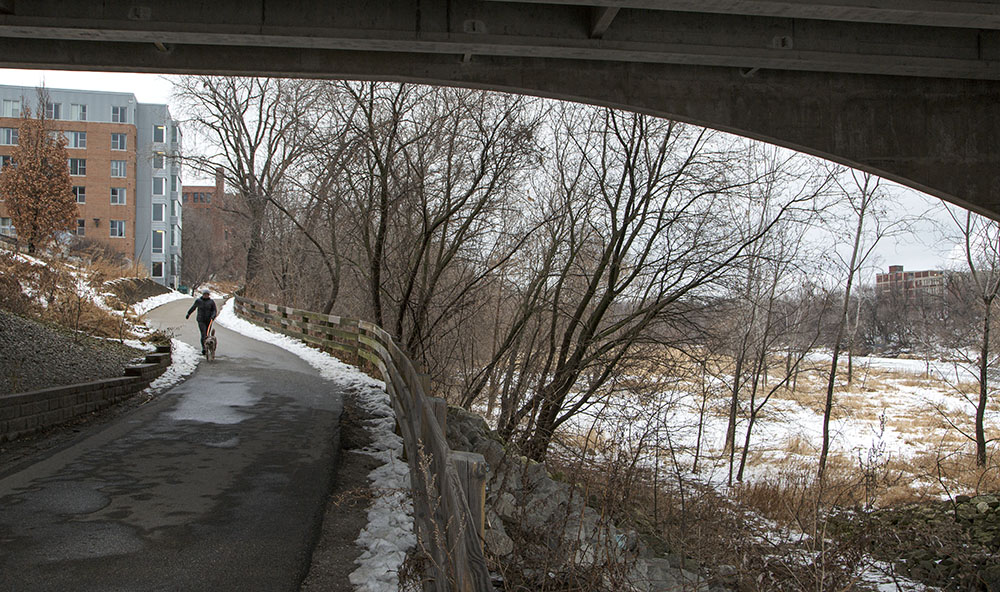
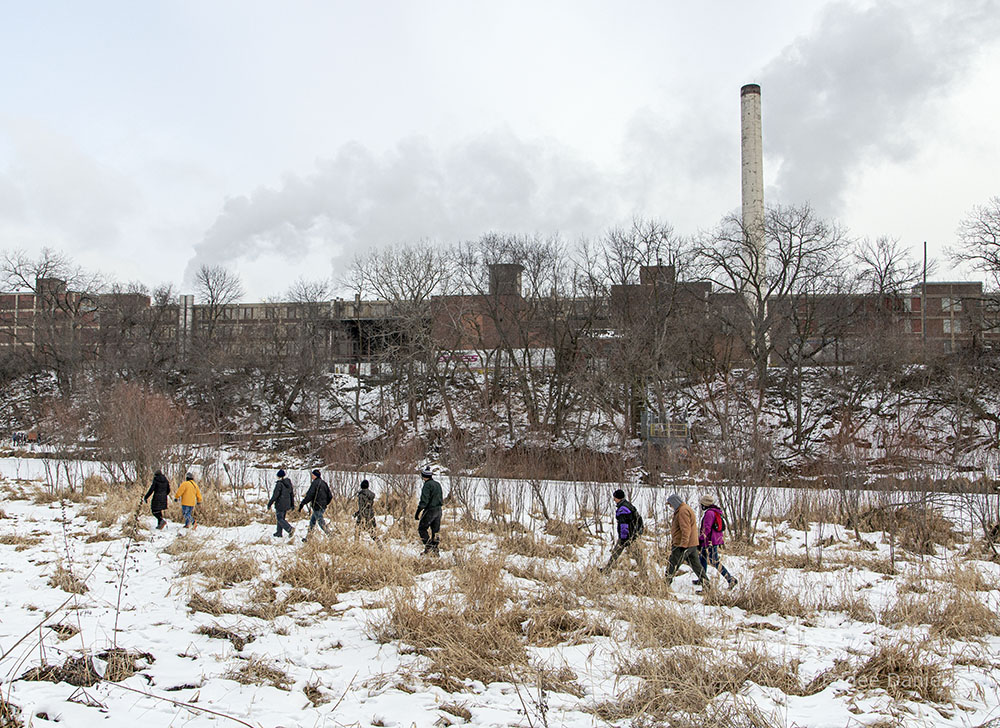
We head north up the west side of the river and are quickly confronted with a choice: The paved Beerline Trail veers upward towards the top of the bluff and away from the riverside. We choose the more rugged West Bank Trail, which hugs the riverside. After passing through a broad floodplain of grasslands, in clear view of a number of large blufftop buildings, we plunge into woodland. The well-pounded, snow-covered trail rises and dips dramatically on rough terrain. I, for one, am grateful to be wearing my cleats.
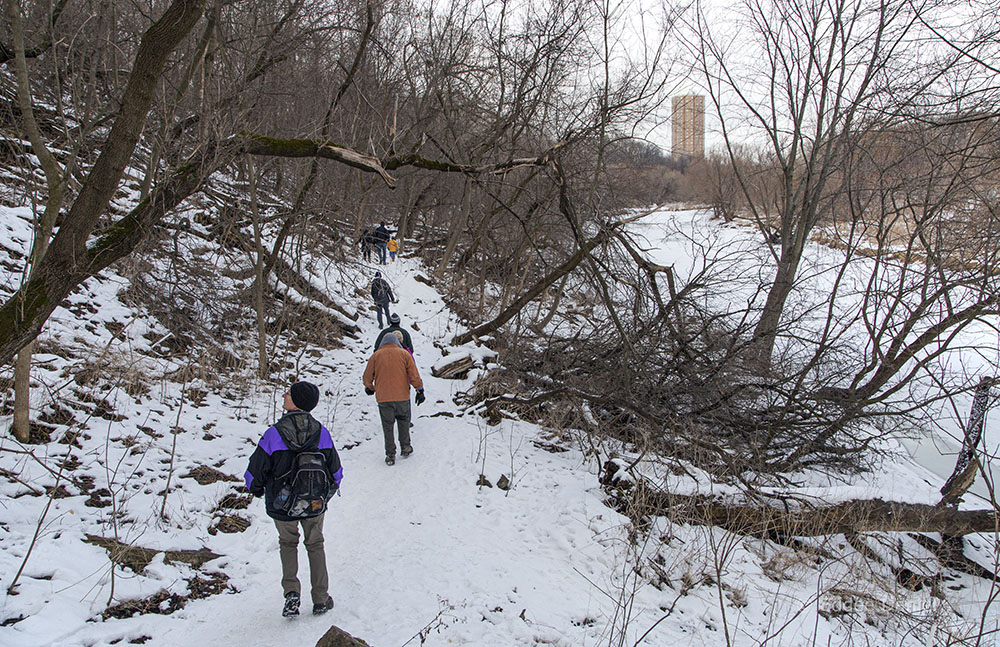
There are footprints everywhere. Some wildlife, yes, but traveling in a crowd at mid-day we are not about to see any of the mostly nocturnal animals that inhabit the Greenway. There are many more human footprints. A few even cross the icebound river between Gordon and Riverside Parks—a risky prospect since there is still plenty of open water both upstream and down. On this cold winter day, we pass and are passed by other people at frequent intervals. Does the presence of so many people negate the potential a place like this has for a “wilderness” experience?

Wilderness has traditionally been defined as a natural landscape undisturbed by humans—an increasingly rare phenomenon. But what of places like the Greenway that have come to be known as “urban wilderness?” They often provide relatively satisfying exposure to unkempt nature, or “the wild,” but invariably they have been disturbed in some fashion. We pause at the ruins of the Gordon Park Bathhouse to contemplate the grand resort that once stood here overlooking the long-gone lake.
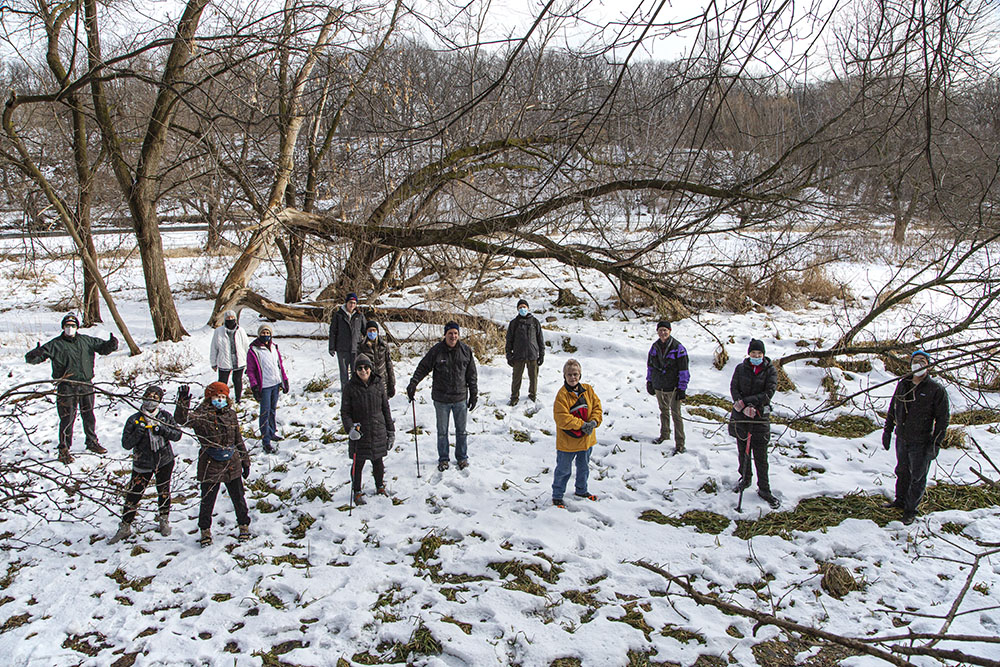
An urban wilderness, almost by definition, is well-traveled because of its proximity to a population that values the peace, spiritual uplift, recreational opportunities, and (yes!) chance to encounter wildlife it has to offer. On many a sunny afternoon, human visitors outnumber the wild animals that live here.
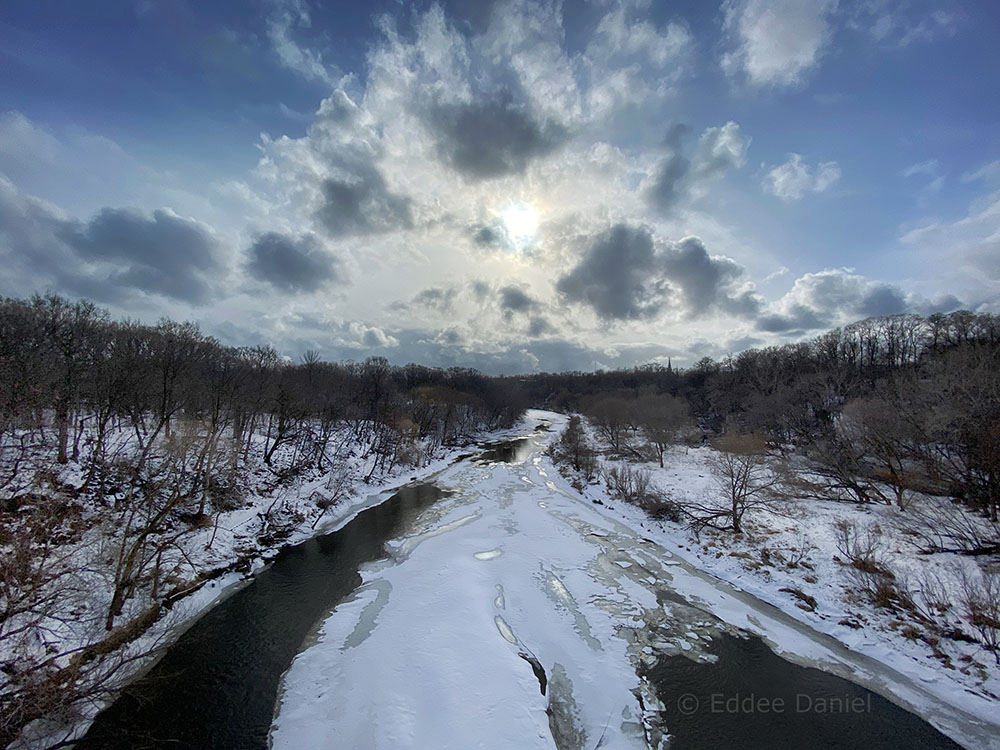
At the north end of Gordon Park, we tramp up the steep road to the top of the bluff and proceed across the Locust Street Bridge. The view of the Greenway from the bridge—in both directions—is unparalleled. Although I never tire of seeing the wedge of river slicing into the tree-lined banks between Riverside Park and Gordon Park—the towers of downtown Milwaukee, when visible at all, dwarfed by the natural landscape—today a spray of clouds around the low, winter sun makes it especially transcendent. We all take a moment to stand in awe. A few selfies are snapped!
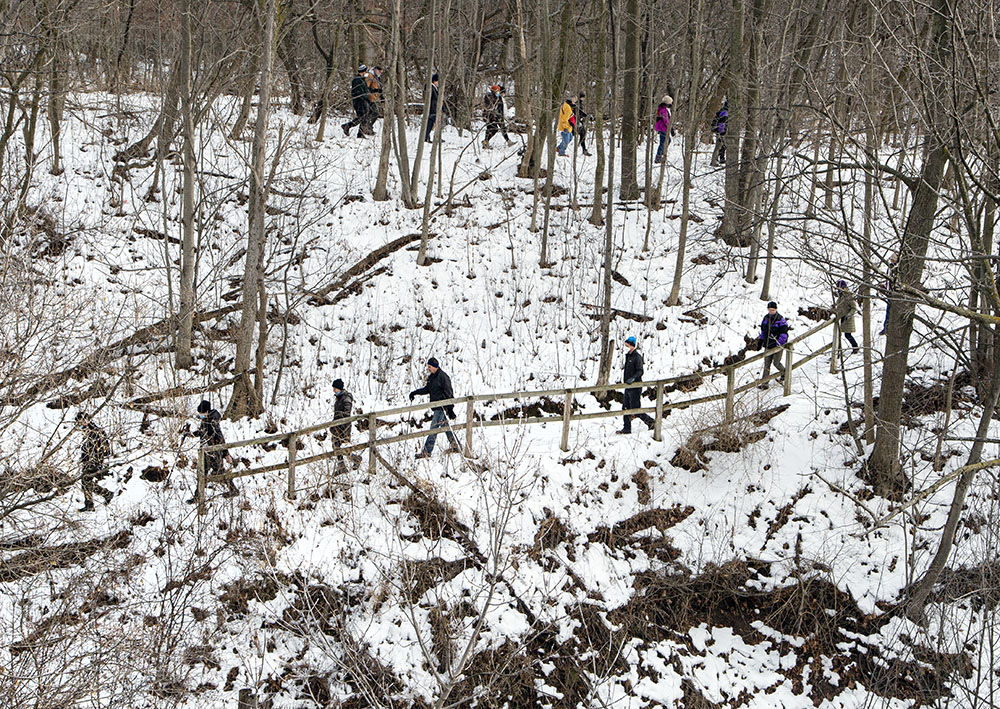
At the East Bank Trail our group begins to splinter, a few heading south on it in a return loop. The rest of us continue north into Cambridge Woods. When it isn’t covered with icy snow, this gravel trail was designed to be accessible. It is also the link in the Milwaukee County Parks Forked Aster Trail System where, in a milder season, I’ve actually seen forked asters! Among a wealth of other magnificent wildflowers. In winter, the payoff is the walk itself, among the solemn, majestic trees, in the companionship of new acquaintances.

Flaunting the rules prohibiting it, a cyclist on a fat-tired bike powers up the hill we are on. Each of us step aside in turn to let him pass. Not long after, we do it again.
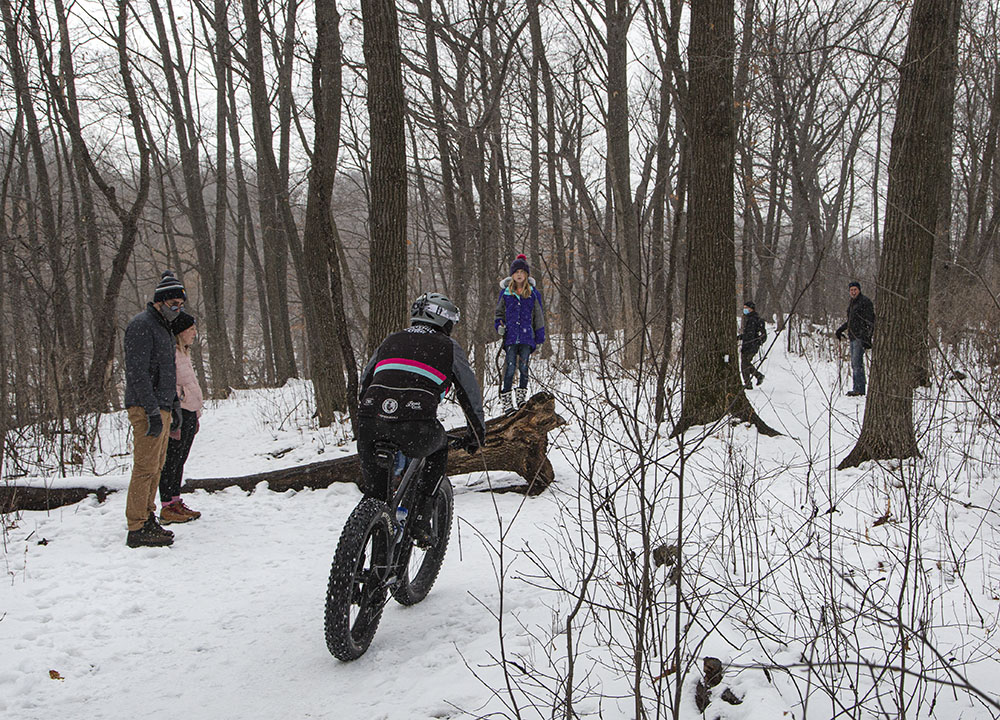
Cambridge Woods is home to one of the more mysterious points of interest in the Greenway: The Tunnel to Nowhere. Unfortunately, our merry band of travelers is engrossed in their individual conversations. If any but me notice as we stroll by, I can’t tell. My closest companions, though, find the story of the dead-end tunnel fascinating when I share it with them. The short version of the story: The railroad included the tunnel underpass when it built the rail line (which is now the Oak Leaf Trail), but no one knows why the tunnel was put there. The speculative answer to the mystery, which makes sense to me, is that the tunnel led to a ravine on the other side that has since been filled in. (For more about the Tunnel to Nowhere, go to Milwaukee Notebook.)

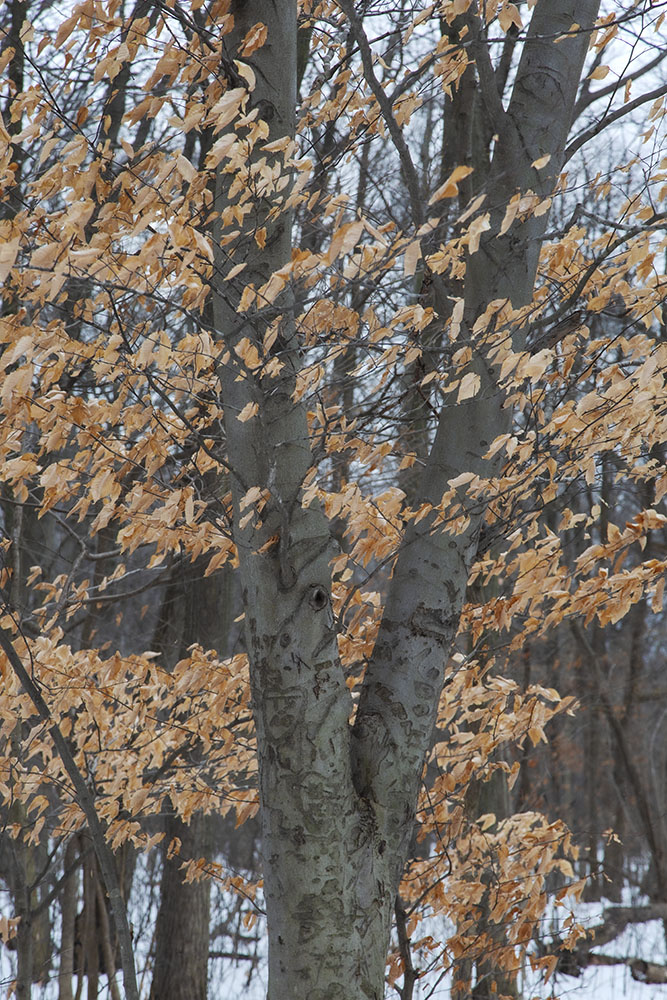
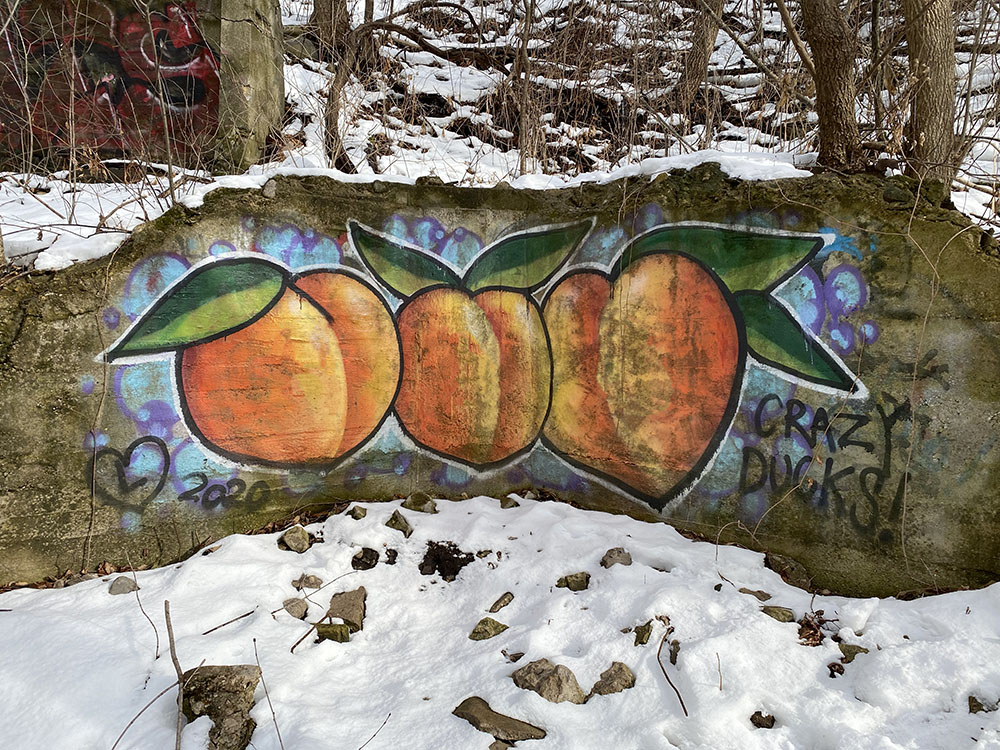
Our small company of friendly strangers dwindles further when we reach Capitol Drive. Hardy hikers continue north through Estabrook Park for a round-trip excursion of about eight miles. I peel off and head back the way we came, taking a little more time to document the wintry scenery in photographs.

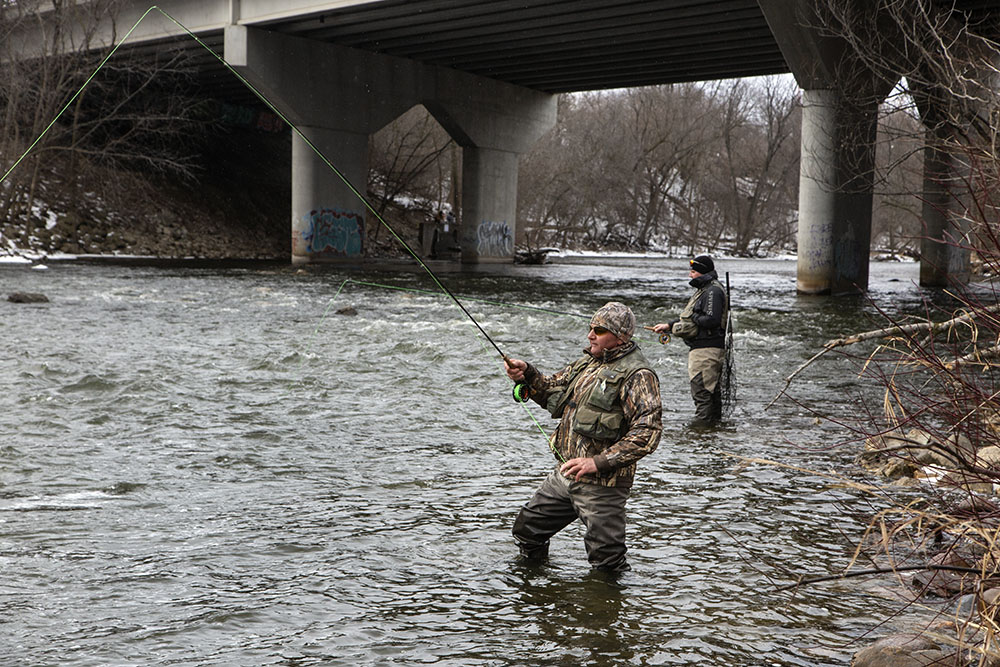
A wilderness experience (urban or otherwise) is probably not the goal for most visitors to the Greenway. Nature doesn’t have to be wild to be soothing, rejuvenating, or even exciting. Some folks just want to go fishing. Quite a few, in fact, judging by the number of anglers we’ve passed along the way. Snow and ice are apparently no impediment. On the way back, I spot a couple of them in the middle of the river near the edge of a fragile-looking ice shelf, next to open running water. When I edge slowly closer to them for a photo, one warns, “This ice is iffy at best!” As he’s wearing hip boots and I’m not, I edge carefully back to shore.
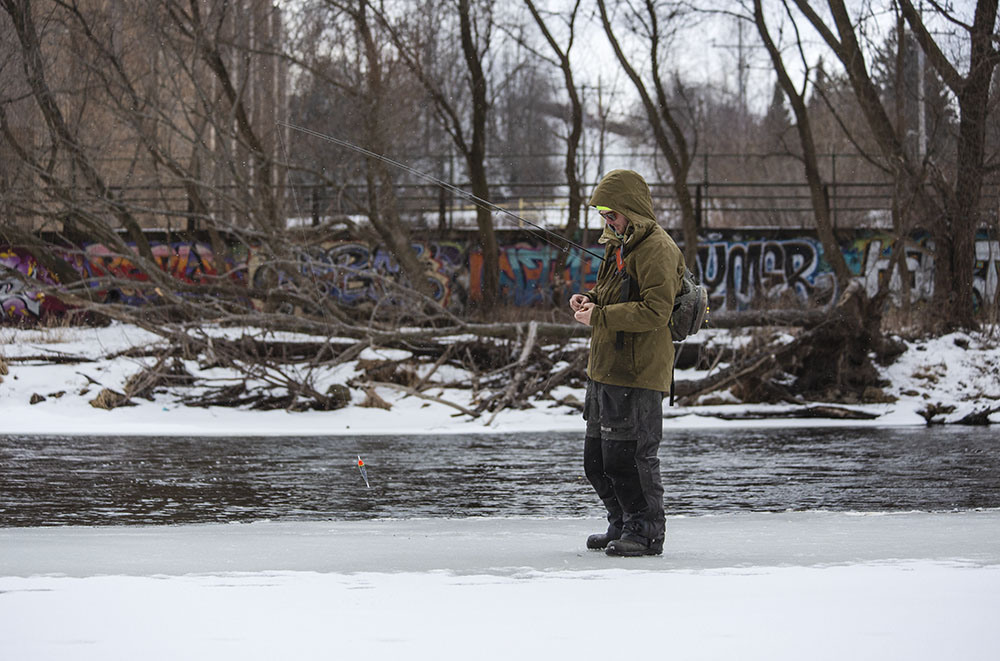
Whether you fish or not, however, having a little quiet time with the running river is a good way to unwind. But, whether you enjoy the Greenway in solitary pursuits like fishing and walking alone or communal ones, like a Meetup hike and Urban Ecology Center programs, the Greenway itself is here to enjoy because the community supports it. Consider the foresight necessary to protect not just the land but also the view. There aren’t many places where you can be just minutes from the city center and also totally immersed in nature, where all that you see is the river flowing, forested bluffs, and infinite sky.
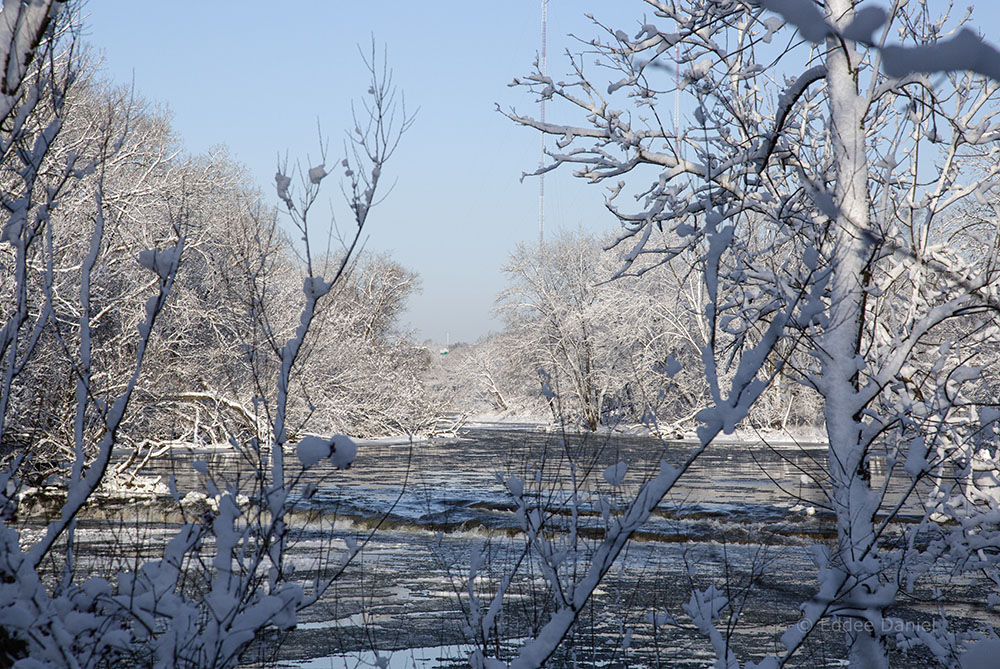
Related stories:
Milwaukee River Greenway: A year in the wilderness
Milwaukee River Greenway: Moments of Gratitude
Hiking the Milwaukee River Greenway: Our premier urban wilderness
Photo essay: Milwaukee River Greenway in white!
Eddee Daniel is Project Director of A Wealth of Nature, Artist in Residence for River Revitalization Foundation, and organizer of Urban Wilderness Explorers on Meetup.com.

